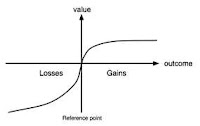Now You Can Subscribe To Pauline Yong’s Trading Strategies Through ChartNexus XPertTrader Charting Software.

In collaboration with ChartNexus, Pauline Yong has incorporated her unique trading strategies into ChartNexus XPertTrader charting software so that subscribers can apply the strategies to buy and sell blue chip stocks and other general stocks in Bursa Malaysia as well as other foreign stock markets. Benefits of Subscribing the ChartNexus XPertTrader Charting Software After subscribing ChartNexus, you can use Pauline Yong’s proven trading strategies – Sigma Wealth (SW) Blue Chip Buy Signal, SW Blue Chip Sell Signal to scan your watchlist, preferably the blue chip stocks list regularly for any buying or selling opportunities. The SW Blue Chip Buy Signal is designed to scan for buying opportunities for blue chip stocks that are intended for medium term to long term hold, hence speculation is not encouraged here when applying this strategy. On the other hand, the SW Blue Chip Sell Signal is to scan for weaknesses in the market so that investors will not hold on to the losers in a severe do...
